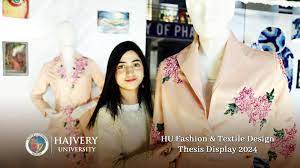A career in fashion design is a blend of creativity, innovation, and strategic business acumen. To maximize your career potential and salary, it’s essential to navigate the industry with a well-rounded approach. This guide will provide actionable insights on how to excel in your fashion design career and optimize your earning potential.
Building a Strong Foundation
Pursuing the Right Education
A solid educational background is crucial for a successful fashion design career. Consider enrolling in a reputable fashion design program that offers comprehensive training in design principles, textile science, and fashion marketing. Look for programs that provide hands-on experience through internships and industry collaborations.
Developing Essential Skills
Fashion designers need a diverse skill set to succeed. Focus on honing the following skills:
- Creativity and Innovation: Constantly push the boundaries of your creativity and stay updated with the latest trends and technologies.
- Technical Skills: Master techniques in sewing, pattern making, draping, and computer-aided design (CAD).
- Business Acumen: Understand the commercial aspects of fashion, including pricing strategies, marketing, and brand management.
Gaining Industry Experience
Internships and Apprenticeships
Internships and apprenticeships provide invaluable industry experience and networking opportunities. Seek positions with established fashion houses, designers, or retailers to gain insights into the industry’s workings and build professional relationships.
Freelance Work
Freelance projects allow you to build a diverse portfolio and establish your reputation in the industry. Take on freelance gigs to gain experience, showcase your versatility, and expand your network.
Fashion Shows and Competitions
Participating in fashion shows and competitions can significantly enhance your visibility and credibility. These events offer a platform to showcase your designs to industry professionals, media, and potential clients.
Maximizing Your Salary Potential
Negotiating Your Salary
Effective salary negotiation is critical to maximizing your earning potential. Research industry standards and be prepared to discuss your skills, experience, and the value you bring to the company. Highlight your achievements and be confident in your worth.
Continuing Education and Skill Development
Continuing education and skill development can lead to higher salaries and better job opportunities. Consider taking advanced courses or earning certifications in specialized areas such as sustainable fashion, digital design, or fashion technology.
Building a Personal Brand
A strong personal brand can set you apart from the competition and attract higher-paying opportunities. Develop a unique design style and consistently showcase your work through a professional website, social media, and industry events. Engage with your audience and build a loyal following.
Exploring Career Advancement Opportunities
Climbing the Corporate Ladder
If you work for a fashion company, seek opportunities for advancement by taking on leadership roles, managing projects, and demonstrating your ability to drive results. Aim for positions such as senior designer, creative director, or brand manager.
Launching Your Own Fashion Line

Starting your own fashion line offers the potential for significant financial rewards. However, it requires substantial planning, investment, and risk management. Develop a solid business plan, secure funding, and create a strong brand identity to succeed in the competitive fashion market.
Diversifying Your Income Streams
Consider diversifying your income streams by exploring various avenues within the fashion industry. Opportunities include:
- Fashion Consulting: Provide expert advice to brands and designers on trends, styling, and market strategies.
- Teaching and Workshops: Share your knowledge and experience by teaching fashion design courses or conducting workshops.
- Collaborations and Partnerships: Partner with other designers, brands, or retailers to create exclusive collections or products.
Navigating Industry Challenges
Adapting to Market Trends
The fashion industry is dynamic, with trends constantly evolving. Stay adaptable by keeping up with market trends, consumer preferences, and technological advancements. Flexibility and innovation are key to staying relevant and competitive.
Managing Financial Stability
Maintaining financial stability is crucial for a sustainable career in fashion design. Create a budget, manage expenses, and save for the future. Consider working with a financial advisor to plan for long-term financial security.
Dealing with Competition
The fashion industry is highly competitive. Stand out by continually improving your skills, staying true to your unique design vision, and building strong relationships with industry professionals. Persistence and resilience are essential traits for long-term success.
Embracing Sustainability and Ethical Practices
Sustainable Fashion
As consumers become more conscious of environmental issues, sustainable fashion is gaining prominence. Embrace sustainable practices by using eco-friendly materials, reducing waste, and promoting ethical production methods. This not only benefits the planet but also enhances your brand’s reputation.
Ethical Production
Ensure that your production processes adhere to ethical standards. This includes fair labor practices, safe working conditions, and transparent supply chains. Ethical production can attract socially conscious consumers and differentiate your brand in the market.
Leveraging Technology and Innovation
Digital Design Tools
Proficiency in digital design tools like Adobe Illustrator, Photoshop, and 3D design software is increasingly important. These tools enhance your design capabilities, streamline production processes, and allow for innovative creations.
E-Commerce and Online Presence
Establishing a strong online presence through e-commerce platforms and social media is essential for reaching a global audience. Invest in a professional website, engage with customers on social media, and use digital marketing strategies to drive traffic and sales.
Virtual and Augmented Reality
Virtual and augmented reality technologies are transforming the fashion industry. Explore how these technologies can enhance your design process, create immersive shopping experiences, and engage with customers in new and exciting ways.
Developing a Global Perspective
International Experience
Gaining international experience can significantly enhance your career prospects and salary potential. Consider studying abroad, participating in international fashion shows, or working with global brands. Exposure to different cultures, markets, and design aesthetics can broaden your perspective and inspire your work.
Global Networking
Building a global network of industry contacts can open doors to new opportunities. Attend international fashion events, join global fashion associations, and connect with professionals worldwide through social media and professional networks like LinkedIn. A robust global network can lead to collaborations, job offers, and business partnerships.
Understanding Global Trends
Stay informed about global fashion trends by following international fashion weeks, reading global fashion publications, and monitoring trends in key fashion capitals like Paris, Milan, New York, and Tokyo. Understanding global trends can help you create designs that appeal to a broader audience and increase your marketability.
Enhancing Your Design Process
Research and Inspiration
Inspiration can come from various sources, including art, history, nature, and culture. Conduct thorough research and explore diverse influences to enrich your design process. Visit museums, attend exhibitions, and travel to different places to gather new ideas and perspectives.
Sketching and Concept Development
Refine your sketching skills and develop a robust concept development process. Create mood boards, color palettes, and fabric swatches to visualize your ideas. A well-documented design process helps you stay organized and communicate your vision clearly to clients and collaborators.
Prototyping and Testing
Create prototypes and conduct tests to ensure your designs are practical and wearable. Experiment with different materials, techniques, and construction methods to achieve the desired fit and finish. Gathering feedback during the prototyping phase can help you make necessary adjustments and improve the final product.
Promoting Your Work
Building a Professional Portfolio

A professional portfolio is essential for showcasing your work to potential employers, clients, and collaborators. Include high-quality images of your designs, detailed descriptions, and technical drawings. Keep your portfolio updated with your latest work and tailor it to the specific audience you are targeting.
Social Media Marketing
Leverage social media platforms like Instagram, Pinterest, and TikTok to promote your work and connect with your audience. Share behind-the-scenes content, design inspirations, and finished products to engage your followers and attract new ones. Consistent posting and interaction with your audience can help build a loyal community.
Website and E-Commerce
Invest in a professional website that serves as an online portfolio and e-commerce platform. Ensure your website is visually appealing, easy to navigate, and mobile-friendly. Use search engine optimization (SEO) techniques to increase your website’s visibility and drive traffic. An integrated e-commerce platform allows you to sell your designs directly to customers worldwide.
Press and Media Relations
Building relationships with fashion journalists, bloggers, and influencers can help you gain media coverage and increase your visibility. Reach out to media contacts with press releases, lookbooks, and invitations to your events. Positive media coverage can enhance your reputation and attract new opportunities.
Continuous Learning and Growth
Professional Development
Invest in your professional development by attending workshops, conferences, and courses. Stay updated with the latest industry trends, technologies, and best practices. Continuous learning can help you stay ahead of the competition and adapt to the ever-evolving fashion landscape.
Mentorship and Coaching
Seek mentorship and coaching from experienced professionals in the fashion industry. Mentors can provide valuable guidance, support, and insights based on their experience. Coaching can help you develop specific skills, overcome challenges, and achieve your career goals.
Personal Growth and Well-Being
Maintaining a healthy work-life balance is essential for long-term success. Prioritize your well-being by managing stress, practicing self-care, and setting realistic goals. Personal growth and well-being are critical to sustaining creativity and passion in your fashion design career.
Conclusion: Thriving in the Fashion Industry
Making the most of your career and salary as a fashion designer involves a multifaceted approach that combines creativity, skill development, industry experience, and strategic planning. By pursuing continuous learning, building a strong personal brand, gaining international experience, and staying adaptable to market trends, you can achieve a successful and financially rewarding career in fashion design. Embrace the challenges, leverage the opportunities, and let your passion for fashion guide you to new heights.











